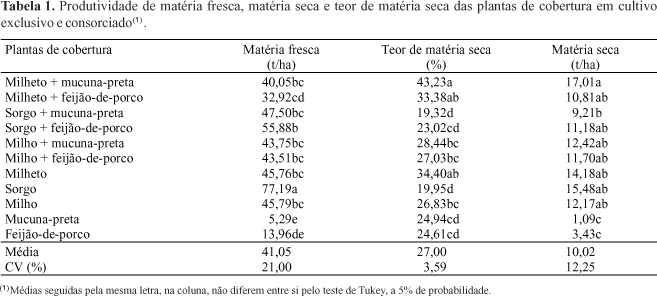The objective of this study was to estimate the production of fresh matter, dry matter and the accumulation of nutrients of the phytomass produced by millet (Pennisetum americanum (L.) Leek Perl millet), sorghum (Sorghum bicolor (L.) Moench), corn (Zea mays L.), black velvet bean (Stizolobium aterrimum) and jack beans (Canavalia ensiformis (L.) DC.) in single and associated cultivation and their effects on bean plants (Phaseolus vulgaris L.) in no-tillage system. Treatments consisted of species in isolated cultivation and the association of gramineous and leguminous plants. The experimental design was that of randomized blocks, with four repetitions. The sorghum in an isolated cultivation shows major productivity of fresh matter. Sorghum and millet in isolated cultivation and the association of millet with black velvet bean produce a great amount of dry matter. The greatest accumulation of nutrients by millet occurs in isolated cultivation and in association with black velvet bean. In the direct bean planting carried out on the straw produced by cover crops, it was verified that the culture yield is more influenced by producer species of straw than by the kind of their cultivation.
Phaseolus vulgaris; mixed cropping; dry matter; phytomass; grain; yield



